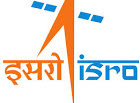Communication Satellite GSAT-30: In a major achievement, India has launched its latest communication satellite GSAT-30 successfully launched from the Spaceport in French Guiana. The launch vehicle Ariane 5 VA-251 lifted off from Kourou Launch Base, French Guiana at 2:35 am IST carrying India’s GSAT-30 and EUTELSAT KONNECT for Eutelsat, as scheduled.
With a lift-off mass of 3357 kg, Communication Satellite GSAT-30 will provide continuity to operational services on some of the in-orbit satellites. GSAT-30 derives its heritage from ISRO’s earlier INSAT/GSAT satellite series and will replace INSAT-4A in orbit. Here is all the important facts regarding the India’s Communication Satellite GSAT-30 which you need to know.
“GSAT-30 has a unique configuration of providing flexible frequency segments and flexible coverage. The satellite will provide communication services to Indian mainland and islands through Ku-band and wide coverage covering Gulf countries, a large number of Asian countries and Australia through C-band” ISRO Chairman Dr K Sivan said.
Dr. Sivan also said that “GSAT-30 will provide DTH Television Services, connectivity to VSATs for ATM, Stock-exchange, Television uplinking and Teleport Services, Digital Satellite News Gathering (DSNG) and e-governance applications. The satellite will also be used for bulk data transfer for a host of emerging telecommunication applications.”
ISRO’s Master Control Facility (MCF) at Hassan in Karnataka took over the command and control of GSAT-30 immediately after its separation from the launch vehicle. Preliminary health checks of the satellite revealed its normal health.
In the days ahead, orbit-raising manoeuvres will be performed to place the satellite in Geostationary Orbit (36,000 km above the equator) by using its onboard propulsion system.
During the final stages of its orbit raising operations, the two solar arrays and the antenna reflectors of Communication Satellite GSAT-30 will be deployed. Following this, the satellite will be put in its final orbital configuration. The satellite will be operational after the successful completion of all in-orbit tests.


Post a Comment